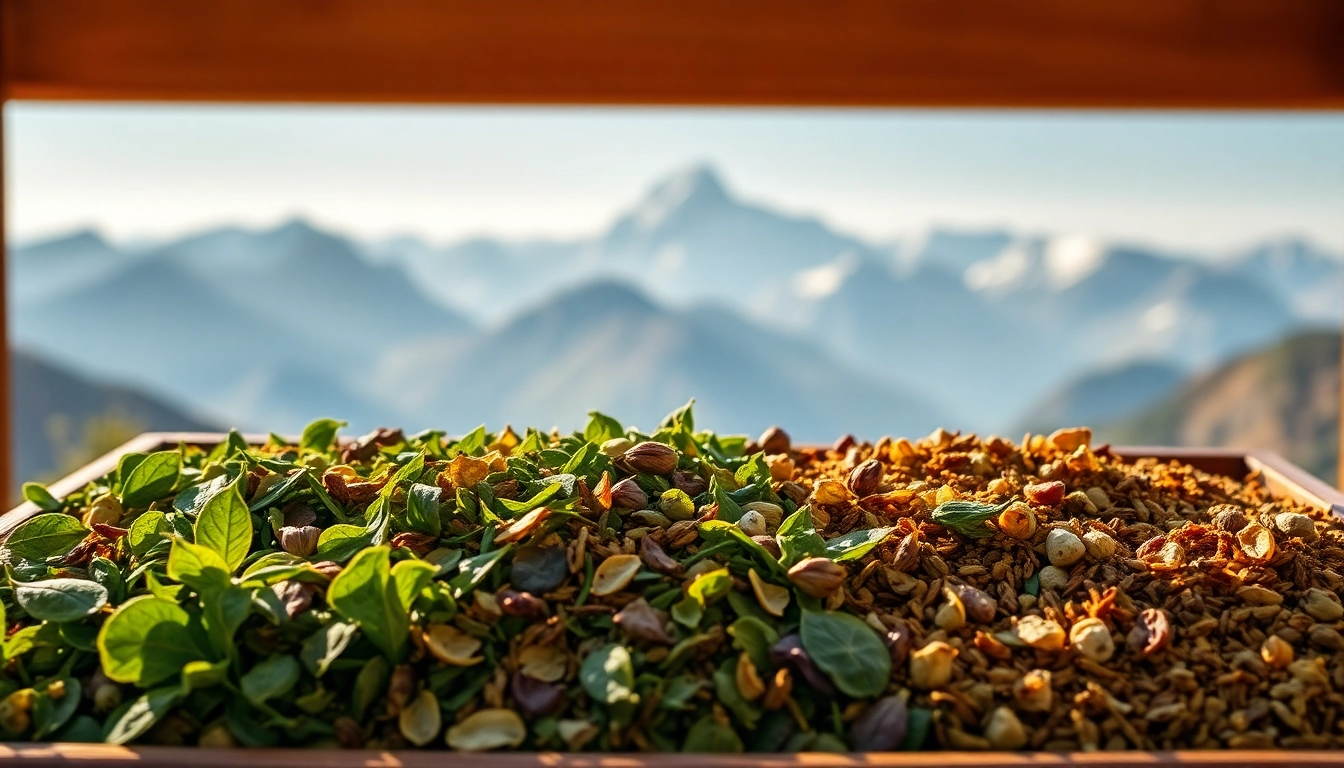Introduction to Nepalese Teas
Nepal, an enchanting country nestled in the heart of the Himalayas, is not only known for its breathtaking landscapes but also for its exquisitely crafted teas. The best teas from Nepal are cultivated in high-altitude regions, where the unique climate and rich soil create distinct flavor profiles that tea lovers cherish worldwide. Over the years, Nepal has established itself as a significant player in the tea market, particularly with its organic options that cater to health-conscious consumers.
The Rich History of Tea Cultivation in Nepal
The history of tea cultivation in Nepal dates back to the late 19th century, during the British Raj, when colonial planters began to introduce tea cultivation in the eastern regions of the country. The most notable regions include Ilam, Kanchanjangha, and the hilly terrains surrounding the Annapurna range. These areas, thanks to their altitudes, experience cooler temperatures and a monsoon climate that is ideal for producing high-quality tea.
Initially, tea was a luxury item, and the locals consumed it in small amounts. However, as tea trees matured and knowledge of cultivation techniques improved, the popularity and availability of Nepali tea began to grow. By the 1980s, the establishment of cooperatives and grassroots organizations helped small farmers gain access to better resources, leading to the growth of organic tea production.
Overview of Popular Tea Varieties from Nepal
Among the most revered tea varieties from Nepal are:
- Black Tea: Known for its full-bodied flavor, black tea in Nepal competes well with renowned varieties such as Darjeeling. It is often characterized by rich, malty notes and an aromatic bouquet.
- Green Tea: This variant offers a refreshing and lighter taste, celebrated for its health benefits and vibrant hues.
- Herbal Tea: Made from native herbs and plants, these concoctions offer various health benefits and unique flavors, drawing from traditional remedies.
Health Benefits of Nepalese Teas
Nepalese teas are not only a delight to the palate but are also brimming with health benefits. The antioxidative properties of black and green teas help fight free radicals, reducing the risk of chronic diseases. Herbal teas provide natural remedies for ailments, and their calming effects make them excellent for stress relief. The presence of essential nutrients and vitamins further enhances the wellness aspect of these teas.
Best Teas from Nepal: A Closer Look
Golden Black Tea: The Crown Jewel of Nepal
Often referred to as the crown jewel of Nepali teas, Golden Black Tea is not only celebrated locally but has received international acclaim. This tea is distinguished by its golden-tipped leaves, which lend it a rich, sweet flavor and smooth texture. Grown in the high elevations of eastern Nepal, this tea’s success can be attributed to careful cultivation and traditional processing methods that emphasize quality.
Nepalese Green Tea: Fresh and Invigorating
Nepalese Green Tea offers a fresh and invigorating experience that tea enthusiasts highly appreciate. With its light, grassy flavor and vibrant green hue, it is often considered a favorite for those seeking an energizing beverage. The processing of green tea involves minimal oxidation, allowing its natural properties to shine through. Its high antioxidant content makes it a key player in the healthy lifestyle movement.
Herbal Teas: Nature’s Remedies from the Himalayas
Herbal teas from Nepal are a delightful exploration of flavors. Blends featuring native herbs like lemongrass, ginger, and mint offer both taste and health benefits, making them perfect for soothing ailments. These teas embody the rich biodiversity of the region and showcase the traditional knowledge of local communities in utilizing nature for their wellness.
How to Brew the Perfect Cup of Nepalese Tea
Essential Tools and Ingredients for Brewing
To brew the perfect cup of Nepalese tea, you’ll need:
- Tea Leaves: High-quality loose leaf tea is recommended for optimal flavor.
- Teapot or Infuser: Choose a teapot or infuser that allows for proper steeping.
- Water: Use fresh, filtered water for the best results.
- Temperature Control: A kettle with temperature settings will help in brewing different types of tea.
Step-by-Step Brewing Techniques
Here’s a simple guide to brewing various types of tea:
- Measure the appropriate amount of tea leaves (generally one teaspoon per cup).
- Heat the water to the correct temperature: around 95°C (203°F) for black teas and 80°C (176°F) for green teas.
- Pour the hot water over the tea leaves.
- Steep for the recommended time: 3-5 minutes for black tea, 2-3 minutes for green tea, and 5-7 for herbal teas.
- Strain the leaves and enjoy your tea, pure or with additives like milk or honey, if desired.
Pairing Nepalese Teas with Food
Pairing tea with food can enhance both the beverage and the meal. Here are some suggestions:
- Black Tea: Pairs exceptionally well with spiced dishes and pastries.
- Green Tea: Complements sushi, light salads, and seafood.
- Herbal Tea: Goes nicely with desserts and can complement savory snacks like cheese platters.
Where to Purchase Authentic Nepali Teas
Top Online Retailers for Nepalese Teas
Purchasing authentic Nepali teas has never been easier, thanks to numerous online retailers offering direct shipping. Websites like Nepal Tea Traders, Young Mountain Tea, and Nepal Tea Collective specialize in offering high-quality organic teas sourced directly from Nepalese farms.
Local Shops Featuring Best Teas from Nepal
In addition to online platforms, many local tea shops and organic markets in major cities often carry Nepali tea. It’s worthwhile to explore these shops, as they might offer unique blends or locally sourced varieties that enhance your tea collection.
Festivals and Fairs Celebrating Nepali Teas
Attending tea festivals can be an excellent opportunity to experience the breadth of Nepalese tea offerings. Events such as the Nepali Tea Festival highlight the cultural significance of tea, allowing attendees to sample various flavors, meet tea producers, and learn about sustainable tea practices.
The Cultural Significance of Tea in Nepal
Tea Ceremonies: A Unique Social Experience
Tea holds a revered place in Nepali culture, commonly serving as a symbol of hospitality. Traditional tea ceremonies often involve serving tea to guests, accompanied by local snacks. These gatherings are more than just about tea; they foster community bonds and showcase the importance of sharing in Nepali society.
The Role of Tea in Nepali Daily Life
In daily life, tea is often consumed as a respite from the hustle, whether as a morning energizer or an evening relaxant. It’s not uncommon for Nepalese families to gather over a cup of tea, discussing their day, sharing stories, and enjoying each other’s company. Tea transcends mere consumption; it is an integral part of Nepali culture.
Supporting Sustainable Tea Farming Practices in Nepal
In recent years, there has been a growing emphasis on sustainable farming practices in Nepal. Many tea producers are adopting organic farming techniques that not only enhance the flavor of the tea but also contribute to the preservation of the environment. Supporting these practices empowers local farmers and ensures a brighter future for both the tea industry and public health.



